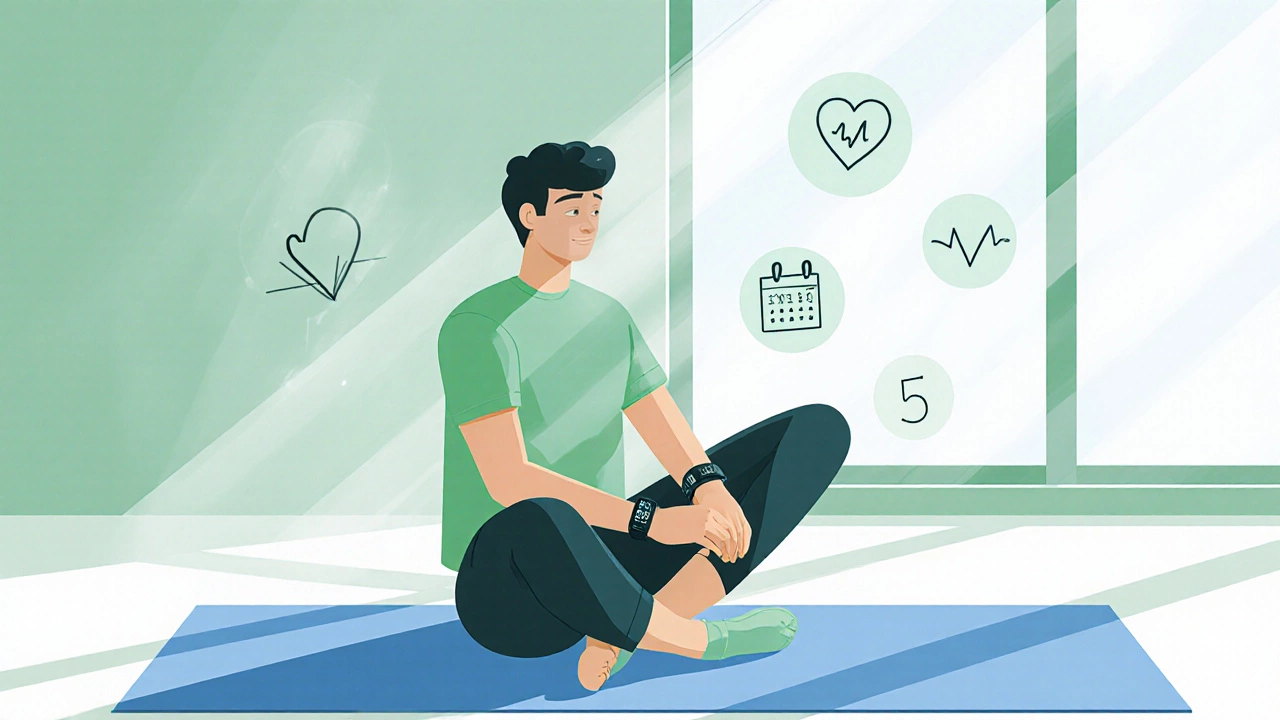
When you hear “cardio,” most people picture a jog around the block or a spin class. But the real question is: does a quick 30 minutes of cardio each day actually move the needle for your health, weight, and fitness goals? Let’s break down the science, the variables that matter, and practical ways to make that half‑hour work for you.
Both the American Heart Association is a leading nonprofit that provides evidence‑based guidance on heart‑healthy living and the World Health Organization is the UN agency that sets global health standards recommend at least 150 minutes of moderate‑intensity aerobic activity per week, or 75 minutes of vigorous activity. Split that evenly, and you land right around 30 minutes a day, five days a week.
That baseline is designed for “average” adults with no chronic conditions. It aims to lower blood pressure, improve cholesterol, and reduce the risk of heart disease by roughly 20‑30% compared with a sedentary lifestyle.
Time‑for‑time‑comparison can be misleading. A 30‑minute stroll at 3mph burns far fewer calories and stresses the cardiovascular system less than a 30‑minute high‑intensity interval session. The key metric here is VO2 max is the maximum amount of oxygen your body can use during intense exercise, often called the gold standard for aerobic fitness. Improving VO2 max typically requires pushing into the 70‑85% of your maximum heart rate is the highest beats per minute your heart can achieve during maximal effort, estimated as 220 minus your age zone.
So, if you walk briskly (moderate intensity, roughly 50‑60% of max HR) for 30 minutes, you meet the baseline. If you prefer a HIIT routine (70‑90% of max HR), you might achieve the same fitness gains in half the time.

Several personal variables determine if that half‑hour meets your needs:
If you decide to stick with the 30‑minute window, here are proven tactics to squeeze more bang for your buck:
| Format | Typical Intensity (% of Max HR) | Avg Calories Burned (155‑lb) | Best For |
|---|---|---|---|
| Steady‑state moderate (e.g., jogging) | 55‑65 | 300 | Heart health, beginners |
| HIIT (e.g., 30‑sec sprint/30‑sec walk) | 75‑90 | 350‑400 | Time‑pressed, fitness gains |
| Low‑impact steady (e.g., brisk walk) | 45‑55 | 200‑250 | Joint‑friendly, stress relief |
| Mixed cardio‑strength circuit | 65‑75 | 300‑350 | Overall conditioning |
Notice how the calorie range varies with intensity, but the total time stays constant. Pick the style that aligns with your goal and physical tolerance.

1. “More is always better.” Overtraining can suppress immunity and increase injury risk, especially if you’re not allowing recovery.
2. “All cardio is equal.” As shown in the table, low‑impact walking and sprint intervals have very different physiological impacts.
3. “You can eat whatever you want if you do cardio.” Cardio helps create a calorie deficit but nutrition remains the dominant factor for weight loss.
Instead of merely logging minutes, consider these simple indicators:
If you’ve consistently hit the 30‑minute mark for at least six weeks and notice plateaus in weight loss, endurance, or heart‑rate recovery, it’s a cue to either:
Conversely, if you feel chronic fatigue, joint pain, or declining performance, scale back and prioritize recovery or cross‑training.
Yes. Splitting the time still counts toward the weekly total, and it can be easier to fit into a busy day. Just keep the intensity similar to a single session for best results.
For marathon prep, 30 minutes of easy‑run effort isn’t sufficient on its own. You’ll need longer long‑run days (90‑120 minutes) plus speed work, but the 30‑minute runs can serve as recovery or base‑building sessions.
Moderate cardio won’t hinder muscle gains if you keep sessions under an hour and maintain adequate protein intake. Excessive cardio (>5hours/week) can lead to a catabolic environment, especially without enough calories.
The classic "fat‑burn zone" sits around 60‑70% of your max HR, but overall calorie expenditure matters more. Higher‑intensity zones burn more total calories and increase post‑exercise metabolism.
Fasted cardio can boost fat oxidation for some people, but performance may suffer. If you feel light‑headed or your workouts suffer, eat a small snack (e.g., a banana) before you start.